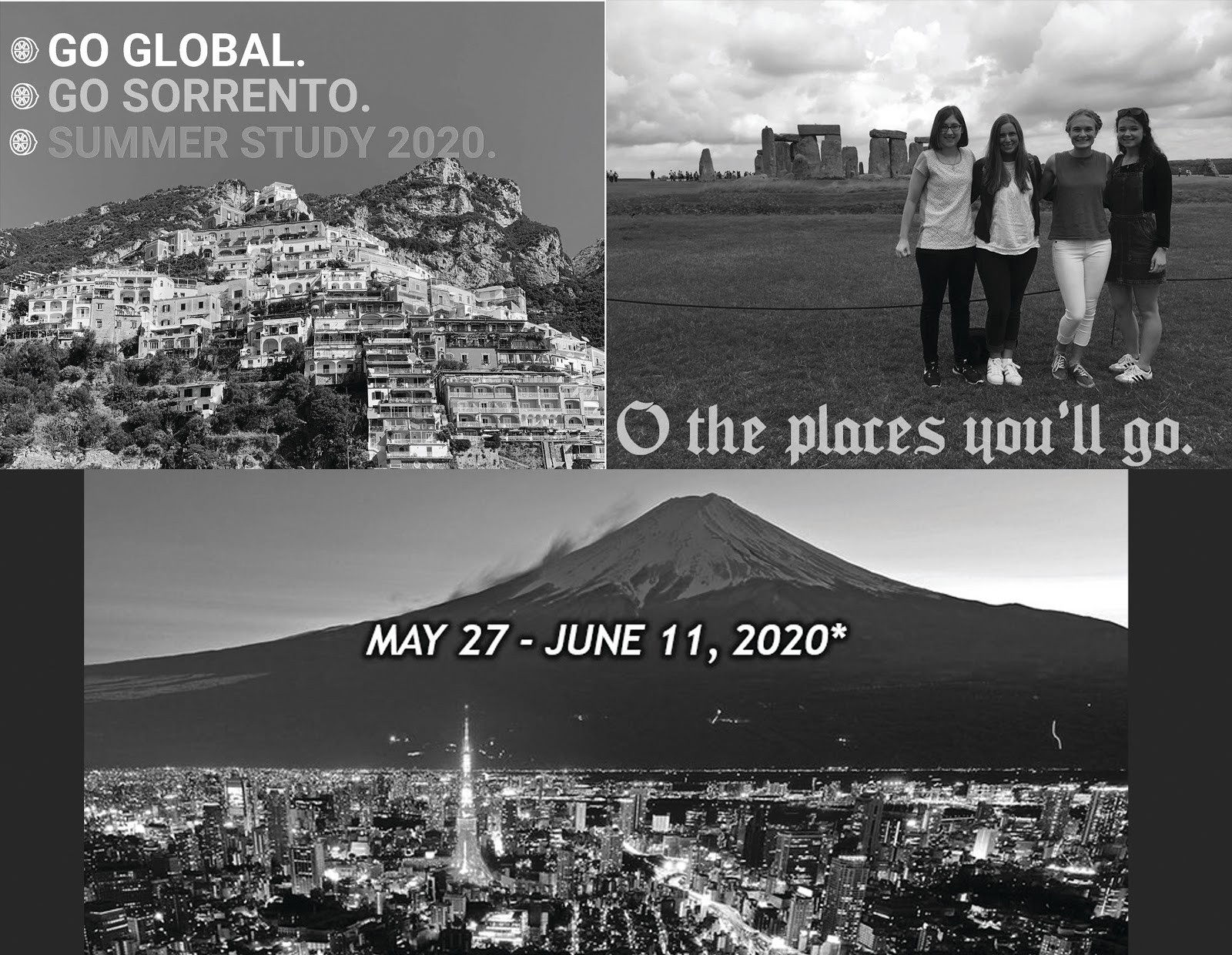Within the past week few weeks, groups of students and professors have been promoting study abroad programs. Japan, Oxford and Sorrento are all featured destinations in the summer of 2020 for St. Bonaventure students preparing to experience the joys and challenges of living and learning abroad.
The Oxford, England study abroad program is by far the oldest at St. Bonaventure, spanning over 30 years. For six weeks, students stay at Trinity College at Oxford University and receive university-level teaching.
“Our students live in the same rooms as regular Oxford students, they study in the same classrooms and they live at Trinity College for six weeks,” said lecturer Michael Jones-Kelley, head of the Oxford program. “We teach required classes, we also teach some graduate-level classes, but generally for undergraduate students, these are Bonaventure courses taught somewhat differently.”
Over the years, the program has managed to lower its cost to only $6,500 for the entire six-week program, and slots fill quickly, as only 13 out of the total 37 remain.
The Sorrento, Italy study abroad program is in its second year of operation. Although it has its roots in the broadcast journalism department at St. Bonaventure, Anna Bulszewicz, Jandoli School lecturer and director of the Sorrento program, describes the Sorrento program as valuable to all students.
“The focus of the program is surrounded by two concepts,” she said. “First, the world is smaller now than it ever has been, and we have no choice but to understand the relevant issues not only in the United States, but in Europe, and become informed global citizens. Second, every single person can benefit from becoming a polished, professional communicator, and we offer that.”
The Sorrento program is smaller than the other two programs, with 12 to 15 total student slots, which is a feature that Bulszewicz describes as both intentional and “uniquely intimate.” The program also lowered its cost in the past year and now totals $7,200.
The Japan study abroad program, while the shortest of the three in length, is a densely packed experience, with students traveling through four major cities in 11 days. During their journey through Tokyo, Kyoto, Hiroshima and Osaka, students are able to experience the unique features of Japan and learn about some of the major historical and contemporary issues that affect both Japan and the world at large.
Christopher Dalton, visiting professor of history and director of the Japan study abroad program, said he believes the program allows students to participate in “living tradition.”
“A lot of our program focuses on urban locales, and we do comparisons of pre-modern Japan versus modern Japan,” he said. “We’ll be taking lessons in Japanese, learning how to make sushi and about Japanese culinary culture, discovering the role of certain people and groups like ‘geishas’ in both a historical and modern international framework and even discussing the history and application of atomic energy.”
The Japan program costs $5,995, a price which includes living expenses, dining and transport. With a total student group of 16, it is only slightly larger than the Sorrento program and students who wish to enroll are encouraged to.
One of the many interesting features of study abroad programs is their ability to promote learning that isn’t entirely centered in the classroom. Jones-Kelley explained that students often forego taking the maximum amount of classes offered in order to fully experience England.
“We encourage people not to take three courses and the reason we do that is because at least half the learning is outside the Trinity gate,” he said. “Living, wandering and just learning that you can live successfully in another country with no problem.”
Dalton also emphasized this point when talking about a planned trip to Shibuya Crossing in Tokyo.
“That’s one of those things like, ‘let’s do it, let’s be a part of this energy,’ that we do,” he said. “I think it’s a pretty interesting kind of cultural experience you can’t get anywhere else.”
As for the Sorrento program, although there are several planned excursions to places such as Pompeii, Milan and the U.S. Consulate, Bulszewicz said that the individual moments are just as, if not more, important.
“Being there, on the Amalfi Coast, there’s no way you can’t absorb the fruits of that romantic Italian environment, and the tools to thrive,” she said. “You come alive.”
Students who wish to learn more about any of the programs should contact the appropriate professor. Additionally, any students interested in the Japan program are welcome to informational meetings on Nov. 4th and 5th in Swan 200 at 3:30 p.m.
By Tucker Reilly, Features Assignment Editor
reillyt19@bonaventure.edu









